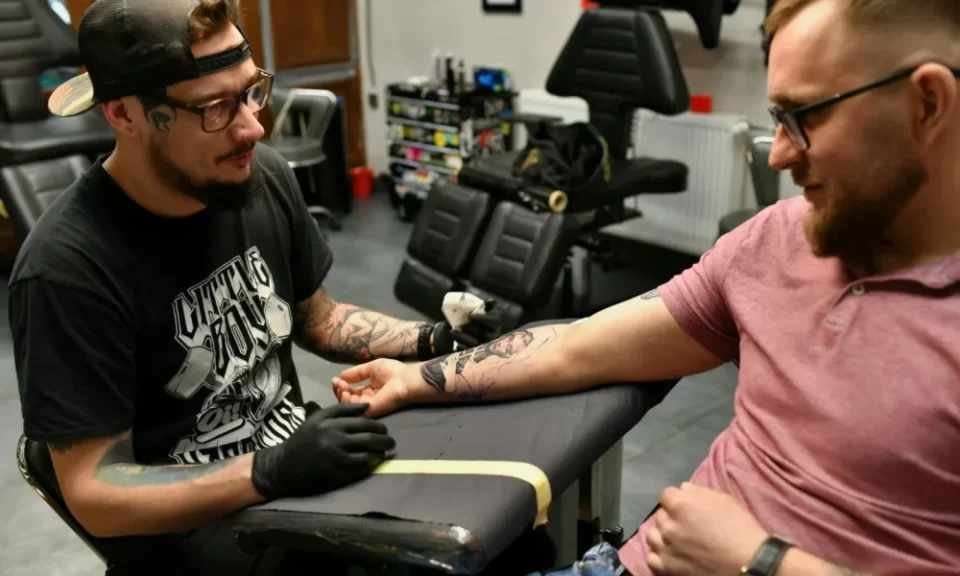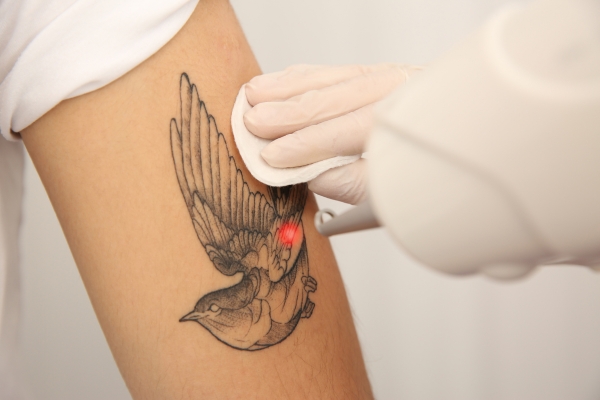Removing a large tattoo presents significantly different challenges than eliminating smaller body art pieces. While the fundamental technology remains the same, the scale dramatically affects almost every aspect of the process, from cost and time investment to physical recovery and final results. With these differences in mind, individuals with extensive tattoos can make an informed decision about tattoo removal.
Unique challenges of large tattoo removal
Large tattoos, typically those exceeding 6-8 square inches, create distinct considerations during removal. Their size affects the treatment area and how the body processes the broken-down ink particles after each session. Key differences with large tattoo removal include:
- Longer session duration for each treatment
- Greater physical stress on the body’s lymphatic system
- Increased likelihood of requiring divided treatment sections
- Higher cumulative pain management challenges
- More extensive aftercare requirements
These factors create a more complex removal journey than eliminating a small symbol or text tattoo.
Time commitment considerations
Removing a large tattoo requires a significant time investment measured in years and hours. The process demands both patience and consistency to achieve optimal results. The timeline typically involves:
- 8-12 total treatment sessions (sometimes more for coloured ink)
- 6-8 weeks between sessions for proper healing
- 1-2 year total timeframe for complete removal
- Longer individual sessions (45-90 minutes for huge pieces)
- Additional recovery time after each treatment
This extended timeline means committing to the process through various life changes, requiring sustained dedication to complete the entire treatment series.
Physical considerations and recovery
The physical experience of removing a large tattoo differs substantially from smaller removals. The increased treatment area amplifies both the immediate sensation and the recovery process. Physical factors to consider include:
- More intense cumulative pain during lengthier treatments
- Greater inflammatory response across the more extensive treatment area
- Increased risk of blistering and temporary texture changes
- More significant aftercare demands following each session
These physical demands require realistic preparation and often more comprehensive pain management strategies than smaller removals might necessitate.
Results and expectations
Setting appropriate expectations becomes particularly important with large tattoo removal. The results typically develop more gradually and sometimes less uniformly than with smaller pieces. Realistic expectations include:
- Uneven fading across different areas
- Potential for “ghosting” or subtle shadows remaining
- Varying response rates for different colors and ink densities
- The possibility that complete removal might not be achievable
- Consideration of partial removal followed by coverup as an alternative
The expanded canvas creates more opportunities for variation in results, making flexible goals significant for satisfaction with the outcome.
View from all angles
When evaluating whether large tattoo removal is worth it, several personal factors influence the decision beyond the practical considerations already discussed:
- The emotional or professional impact of the existing tattoo
- Your tolerance for a lengthy, sometimes uncomfortable process
- Financial capability to complete the entire treatment series
- Willingness to accept partial results if complete removal proves challenging
- Consideration of alternatives like selective fading for coverup
Removing a large tattoo represents a significant commitment of financial resources, time, and physical endurance. The decision warrants careful consideration of practical factors alongside personal motivations and expectations. Research continues into emerging technologies for those seeking alternatives to traditional laser treatments, particularly for large tattoos where the cumulative effects of multiple laser sessions raise concerns. Using neatcellpen for tattoo reduction is an option some consider, but its success rate varies based on skin type and ink depth.


